Manitoba’s Shed Hunting Season: Antlers on the Ground, Lessons in the Woods
Each spring across Manitoba, as the snow begins to melt and the bush comes alive with migrating birds and thawing creeks, a different kind of hunting season quietly kicks off—shed hunting. For whitetail hunters, outdoor lovers, or anyone just looking to shake off winter and reconnect with the land, shed hunting offers that perfect excuse to lace up your boots and get out there. It’s a chance to breathe in the fresh spring air, stretch your legs after a long Manitoba winter, and uncover a few hidden treasures left behind in the snow-covered days gone by.
Whether it’s for the thrill of finding a big antler, scouting for next fall, or simply spending time in the bush as it wakes up again, shed hunting is one of the best ways to transition into a new season outdoors.
Why do Deer Shed thier Antlers?
Every year, whitetail bucks grow and shed their antlers—one of nature’s most fascinating cycles. But why do they drop them at all? In simple terms, antlers are like seasonal tools. Bucks grow them in the spring and summer to compete for mates during the fall rut. Once breeding season is over and testosterone levels drop, the antlers are no longer needed. That hormonal change triggers a natural process where the bone at the base of the antler weakens, and eventually, the antlers fall off.
It’s nature’s reset button—making way for a brand-new set to grow next year, often larger than the last. For shed hunters in Manitoba, this creates an exciting window in late winter and early spring to hit the bush and search for these fallen antlers, each one a unique story left behind in the snow.
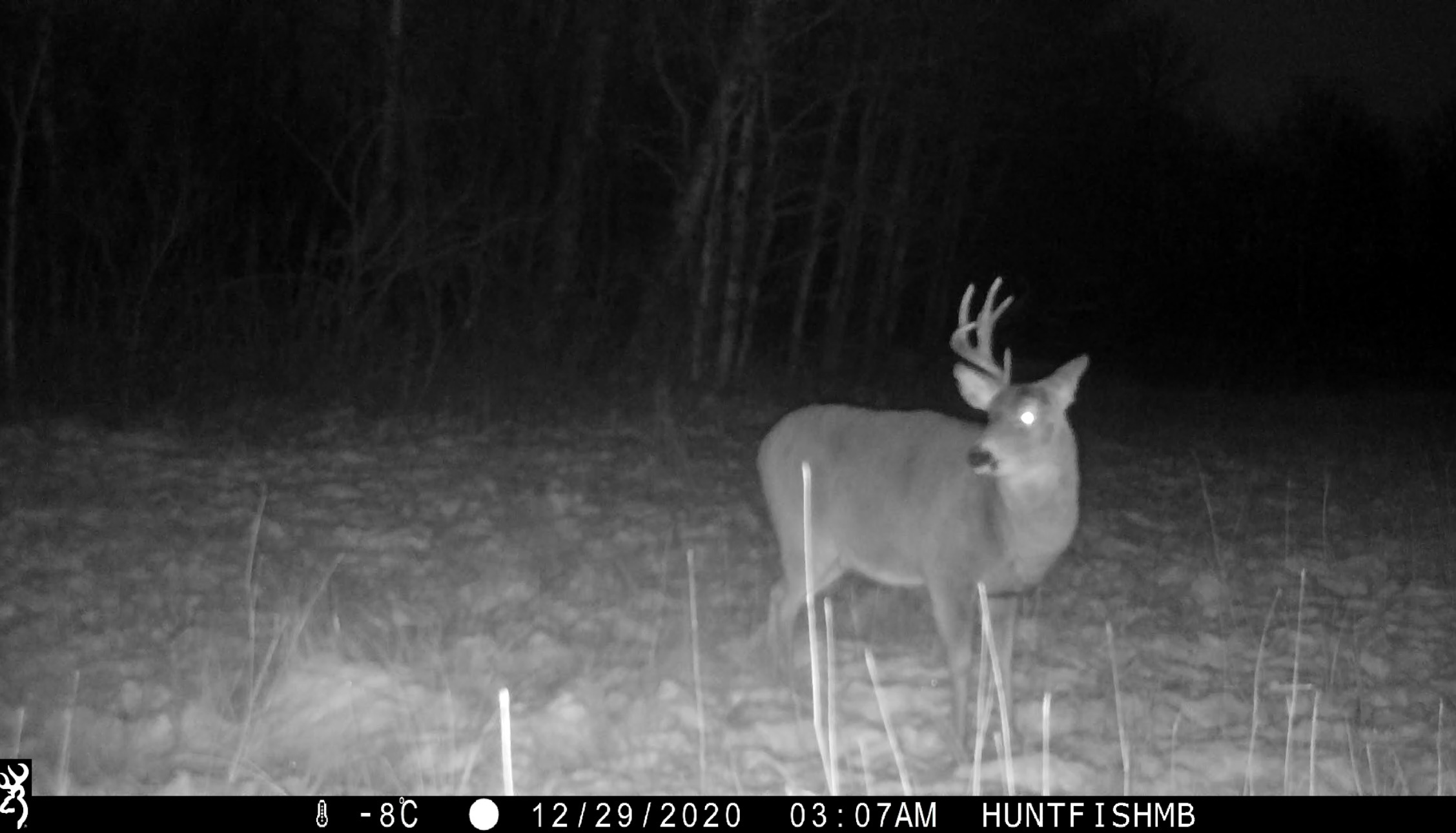
Why Shed Hunting Is More Than Just a Walk in the Woods
Now that whitetails have dropped their antlers over the winter and the snow is giving way to the spring thaw, it’s prime time to hit the bush for shed hunting. As the snow melts, it reveals hidden treasures from colder days—antlers scattered across the landscape like prizes waiting to be found. This season gives outdoorsmen and women the perfect excuse to shake off cabin fever, breathe in the fresh spring air, and enjoy the outdoors now that the air no longer hurts your face.
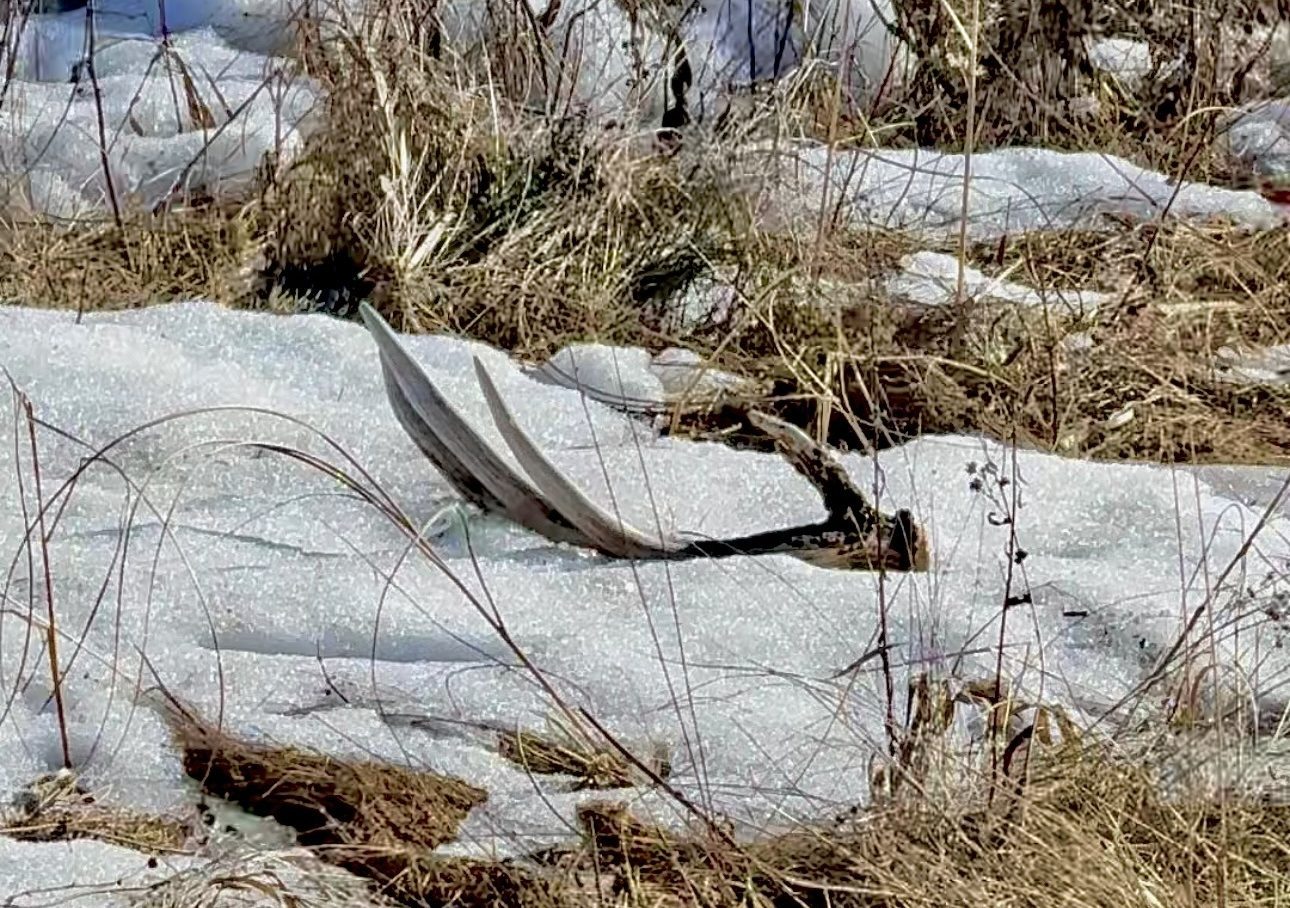
It’s a great time to watch the world come back to life—from migrating birds echoing through the woods and fields, to melting snow giving way to signs of wildlife emerging from their winter routines. Shed hunting isn’t just a walk in the woods either—it’s a chance to stretch your legs, get some solid post-winter exercise, and maybe even find a little reward along the way.
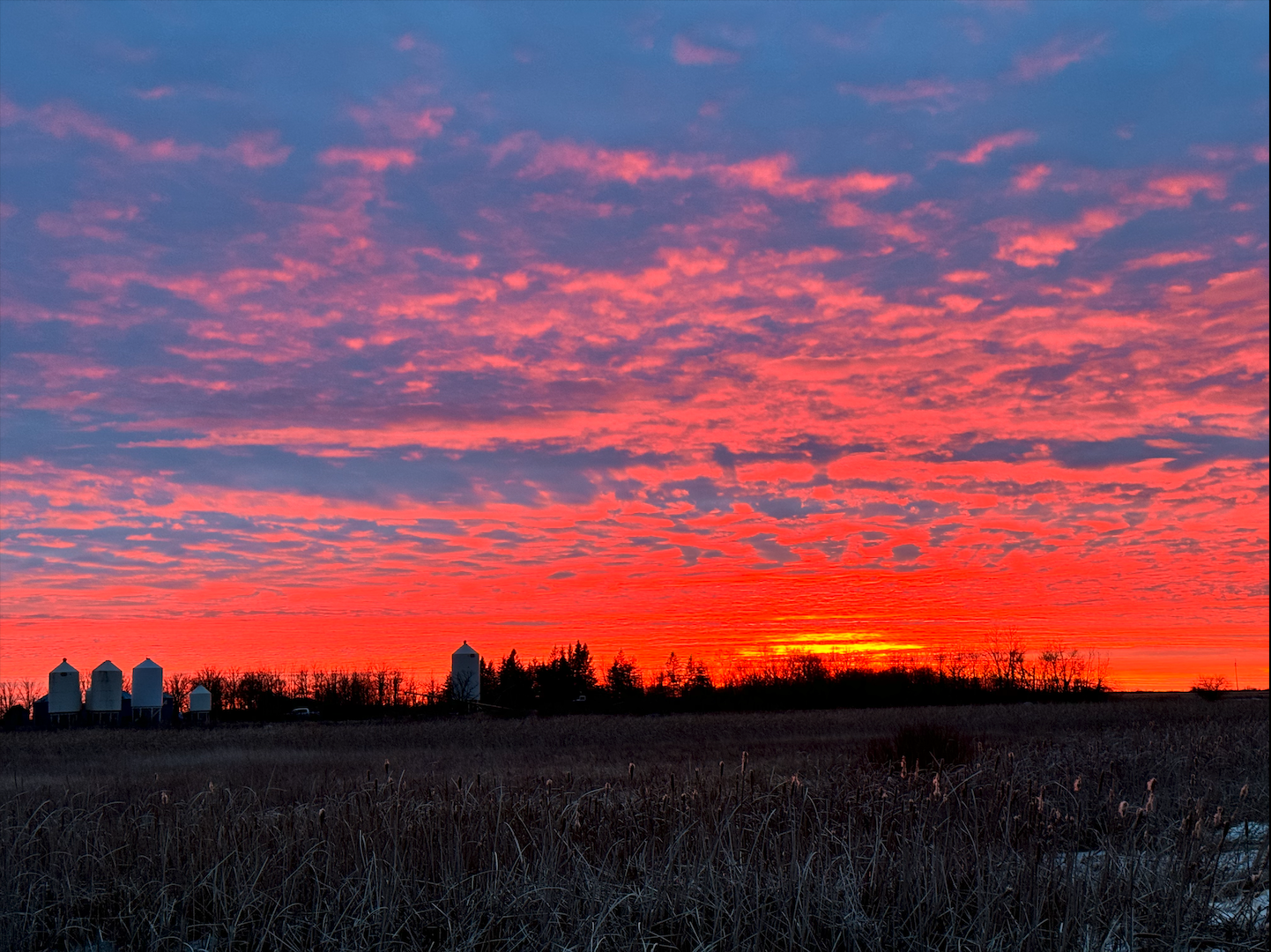
Because let’s be honest—there’s nothing quite like the feeling of spotting a tine poking through the receding snow, or catching that flash of white on the side of a deer trail. It’s a rush that rivals setting the hook into a big fish, watching a flock of geese cup into your spread, or locking eyes with a buck slipping into your shooting lane. Walking out of the woods with an antler or two in hand is its own kind of trophy. Whether you’re displaying them proudly as rustic home decor or tying them together for a set of rattling antlers in the fall, each shed holds a memory from the moment you found it.
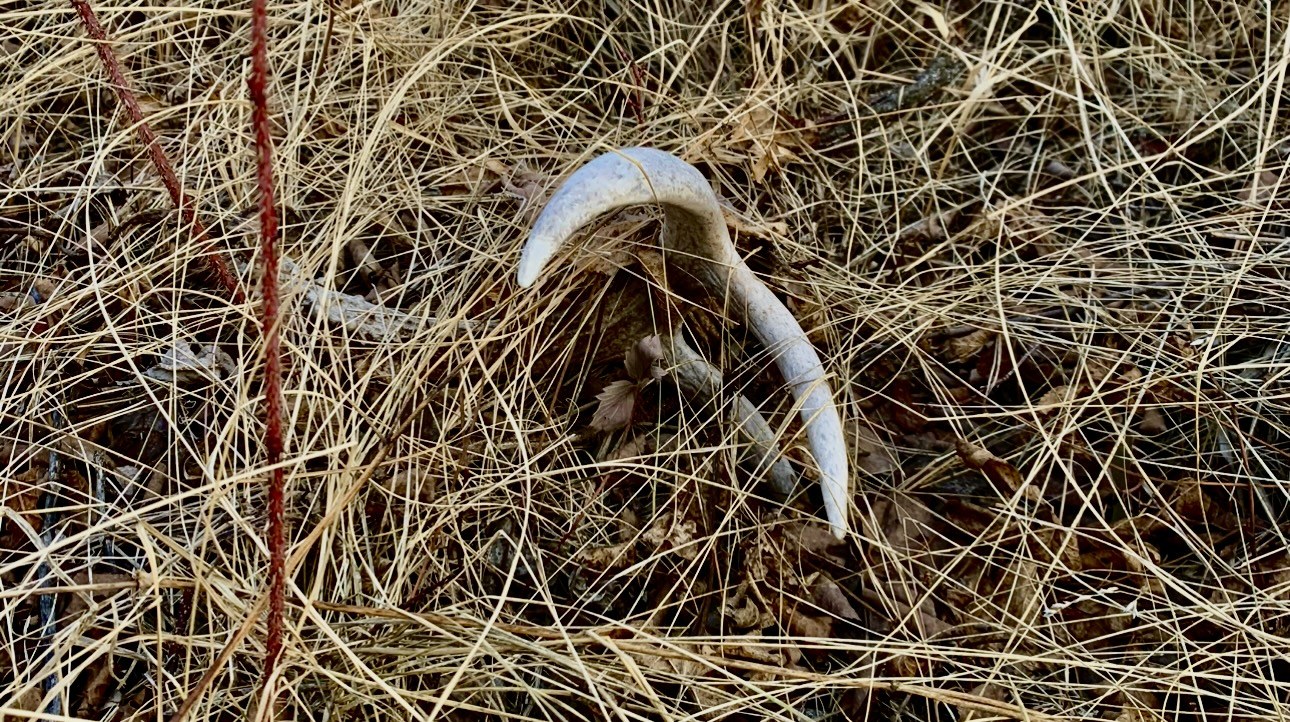
And all that time spent in the woods? It brings you closer to the deer themselves—helping you better understand their habits and movement patterns, giving you a leg up for the fall hunting season. But we’ll dive deeper into that a little later on.
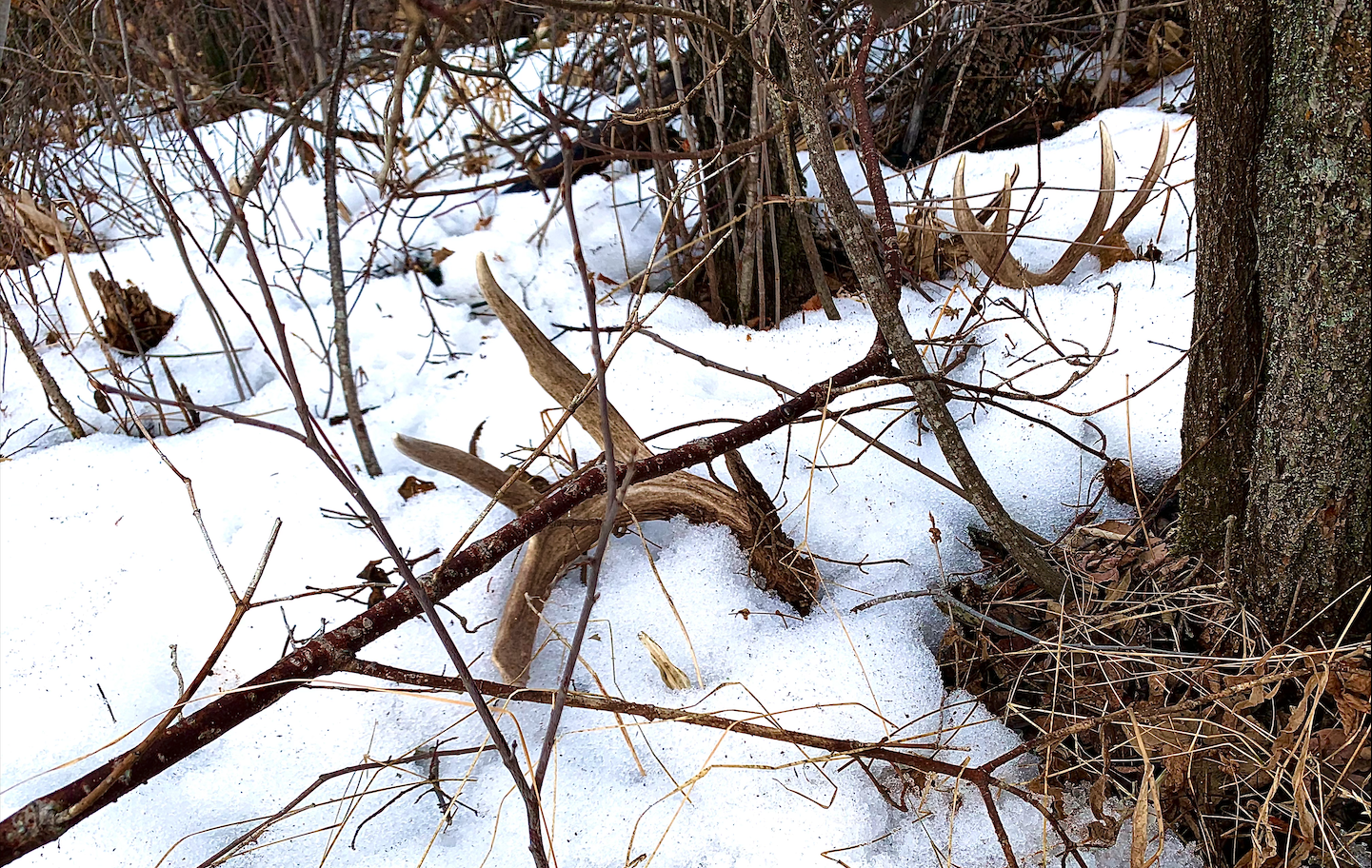
When to Start Shed Hunting
When it comes to the question, “When should I start shed hunting?”—there isn’t a hard-and-fast date, but there are definitely a few tips that can increase your chances of success. While some folks begin looking as early as January or February, it’s important to be mindful of the deer’s condition during that time. Whitetails are often in a "survival mode," conserving energy to make it through the harshest part of winter. It’s best to avoid pushing too deep into bedding areas during these colder months to prevent bumping deer and forcing them to burn unnecessary calories. Instead, stick to food sources and nearby trails—areas where deer are more active and where dropped antlers are likely to turn up.

For me, the end of walleye season here in southern Manitoba signals the perfect time to shift from ice fishing to shed hunting. With walleye season typically wrapping up on the first Sunday in April, it lines up nicely with a transition in the deer’s behavior. Warmer weather begins to settle in, and the deer are no longer locked into strict survival mode. They start to spread out again, often feeding in the now-exposed ag fields around their wintering areas
By this time, snow levels in the bush have usually dropped, making for easier walking and better visibility. As the last of the snow melts away, shed antlers often stand out nicely on the flattened, dead grass from the previous year. For me, shed hunting has become the perfect “shoulder season” activity to bridge that gap between the end of ice fishing and the start of spring bear and turkey hunting seasons. I will keep at it until the new spring growth really starts to take off. Once that fresh greenery begins pushing up, it gets a lot tougher to spot sheds. Those white or brown tines that once popped against the dull backdrop of early spring start to blend in with the colour and clutter of new life. The forest gets thicker, trails get more overgrown, and antlers that were once easy to see can suddenly disappear into the landscape. So, timing is key—getting out before the forests and fields green up gives you the best shot at spotting those hidden treasures.

How To Shed Hunt:

Start With Food Sources and Permission
Throughout the winter months, chances are you’ve spotted several food sources that held strong numbers of whitetail deer. Keeping a mental map—or better yet, some physical notes—of these locations will give you a major edge come spring. Once the melt begins, these spots often reveal the antler treasures left behind. It’s a good idea to start pursuing permission from landowners early, so you’re ready to walk when the time is right. Don’t overlook spots like grain bins, silage piles, or feedlots—anywhere that’s drawn deer in consistently through the cold months.
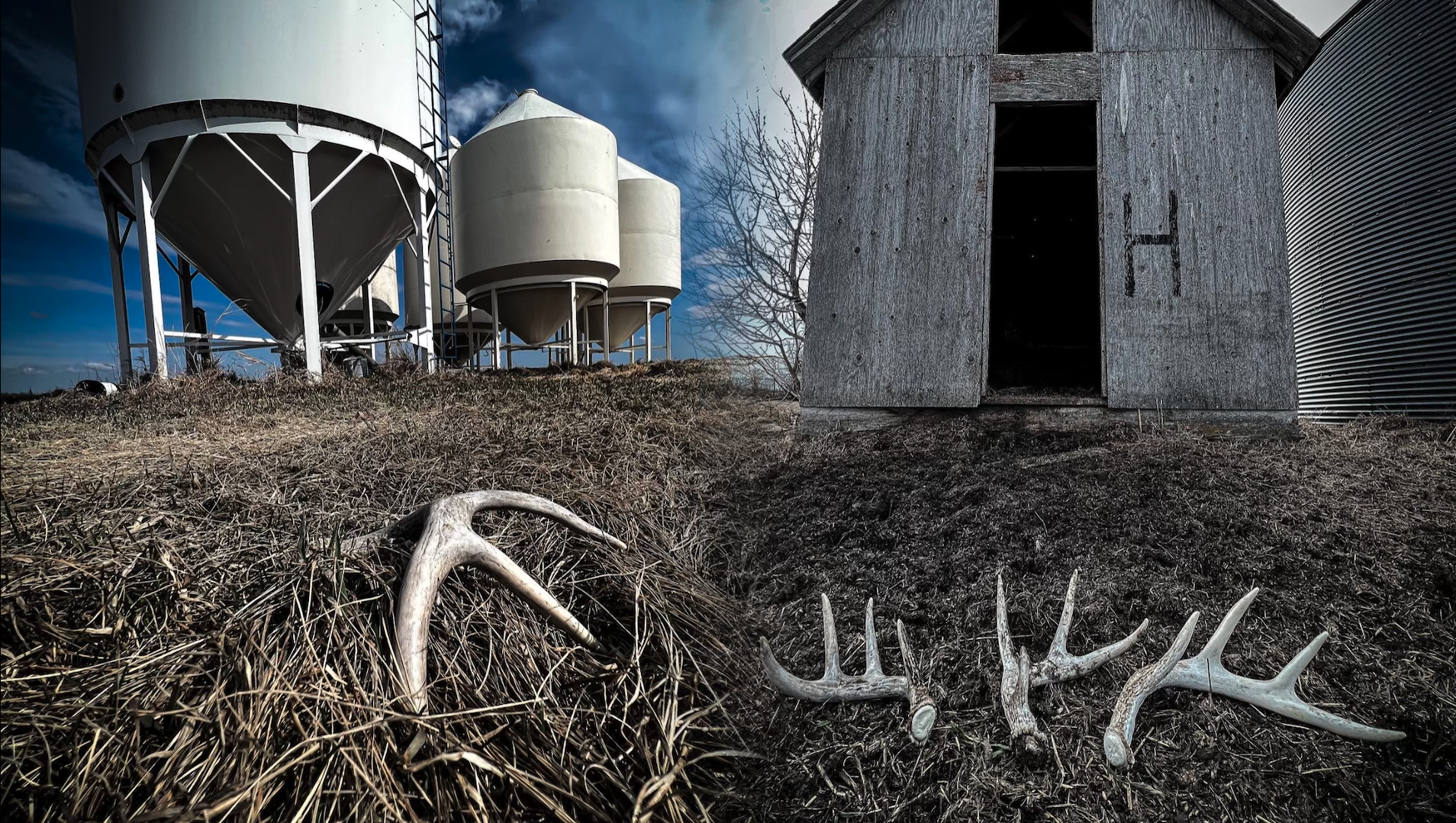
Let the iHunter App Be Your Guide
When it comes to searching large open fields, the iHunter App becomes an essential tool. I always turn on the “Track Me” feature before I start. This creates a breadcrumb trail over the HD satellite map, showing exactly where you’ve been so you can avoid doubling back or missing sections.
I usually begin by walking the most obvious, well-used deer trails as they spiderweb across the field. After that, I switch into a grid search pattern—making long, deliberate passes back and forth. The trick is to make your swaths wide enough to cover ground efficiently, but still narrow enough that you can spot a tine sticking up (Keeping an eye on your iHunter tracks helps keep those lines good and straight). A good pair of binoculars is key here—saves you a lot of walking toward sticks that look “just antler-y enough.”
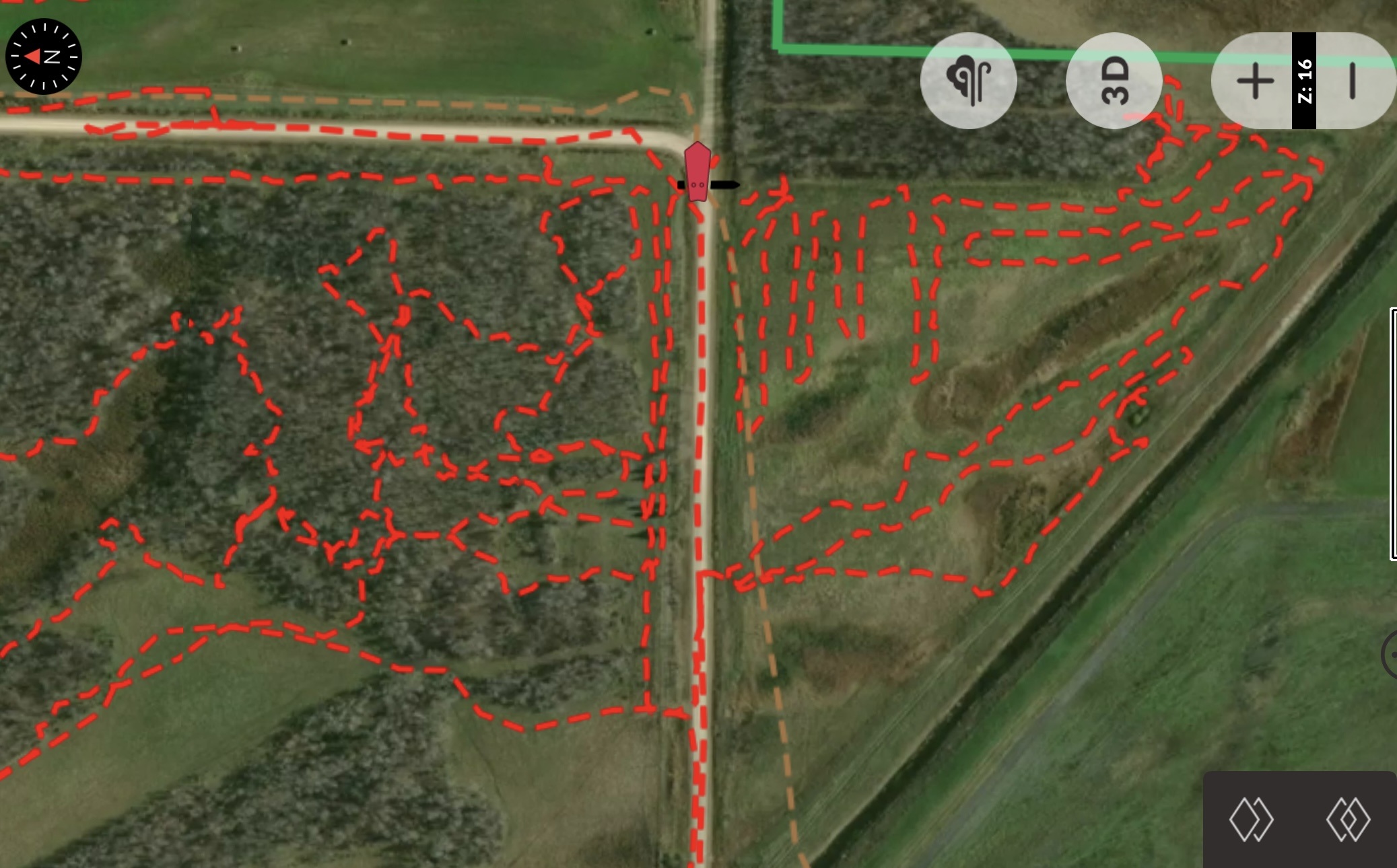
Focus on Field Edges and South-Facing Bush Lines
Once the field has been thoroughly covered, I shift focus to the field edges and bush lines—especially the first 20 to 30 yards into the bush. South-facing edges are high-priority. These spots get the most mid-day sun during winter, making them prime bedding areas for deer looking to soak in some warmth. As I move along these edges, I use iHunter to mark any good trails entering the bush for a deeper look later.
If there’s a fence line nearby, give it a close look. When bucks jump fences, the jolt can knock an antler loose—leaving it right there for the finding.
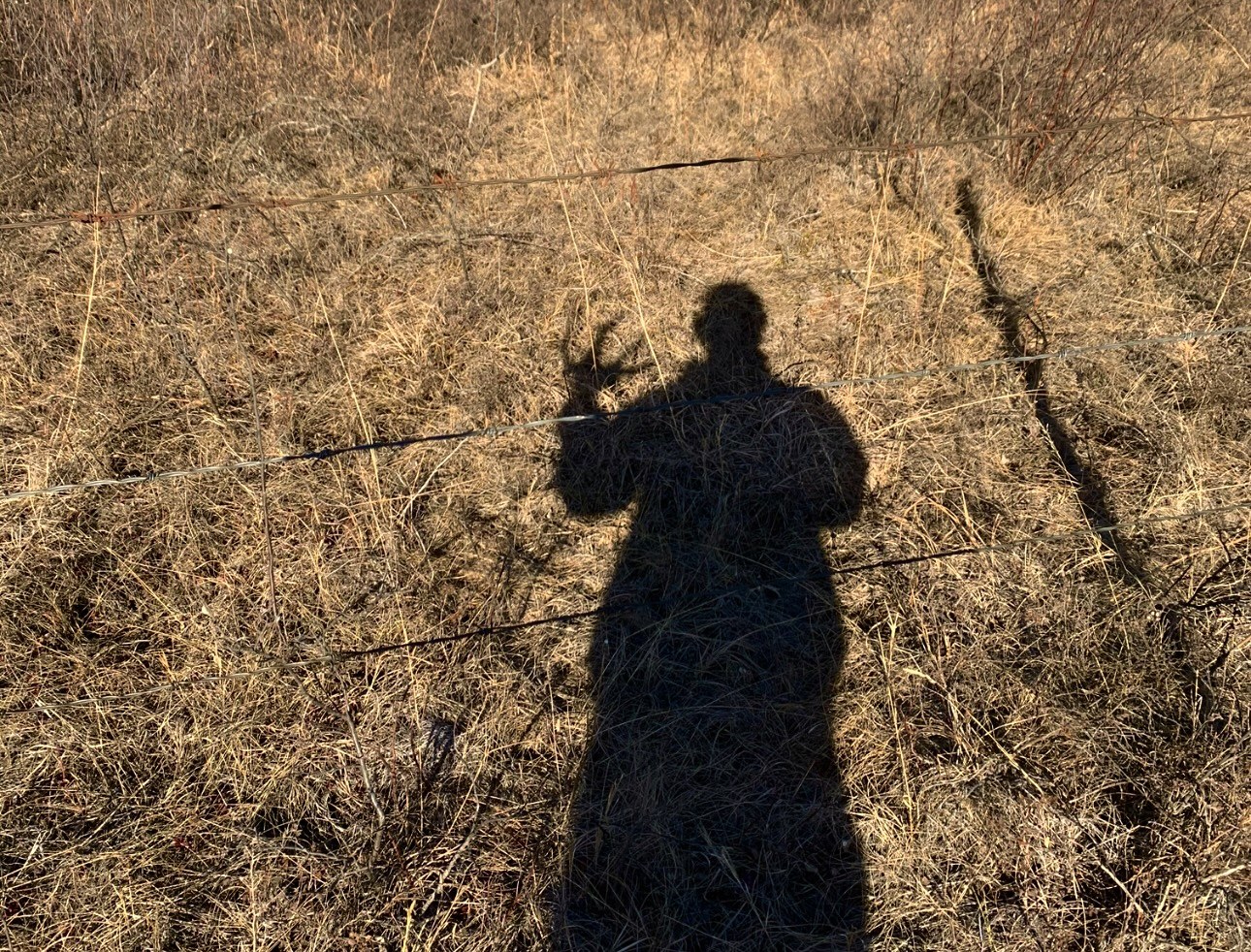
Follow Trails Into Bedding Areas
Once I’ve checked the fields and perimeters, I follow the trails I’ve marked on iHunter into the woods. These trail systems often lead to core bedding areas, and that’s where things can get good. As I go, I waypoint trail intersections so I can come back and check every arm of the network.
When I come across a concentrated cluster of beds, I slow right down and begin a tight grid search. These areas are high-percentage for finding sheds and deserve a thorough, deliberate pass.
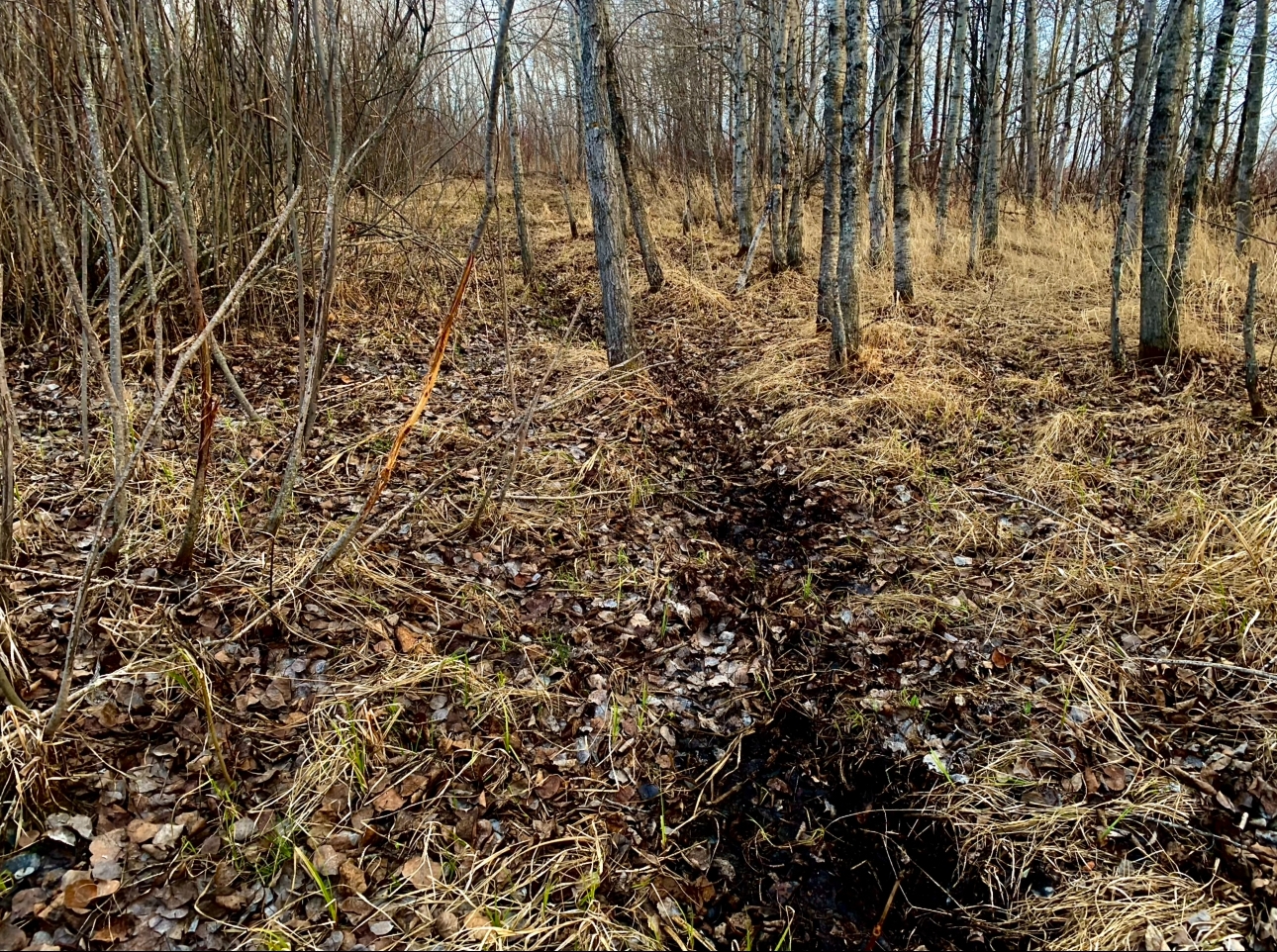
Topography: South-Facing Slopes Are Key
If you’re shed hunting in a region with more terrain—rolling hills, ridges, or valleys—don’t overlook south-facing slopes. Whitetails (and elk, if they’re around) will often bed on these sunny exposures throughout the coldest stretches of winter. These spots soak up the most heat and are ideal zones to comb through in your search.

Don’t Sleep on the Ditches: Road Shed Tactics
Another tactic I enjoy is searching for what I call “road sheds.” I’ll drive gravel backroads through areas with high deer density or good winter food sources, scanning the ditches for antlers. Jumping fences or darting across roads can easily knock an antler loose. Over the years, I’ve picked up plenty just lying there in plain sight. But safety is key—stick to quiet, low-traffic gravel roads and be sure to pull off safely when you want to stop and take a closer look.
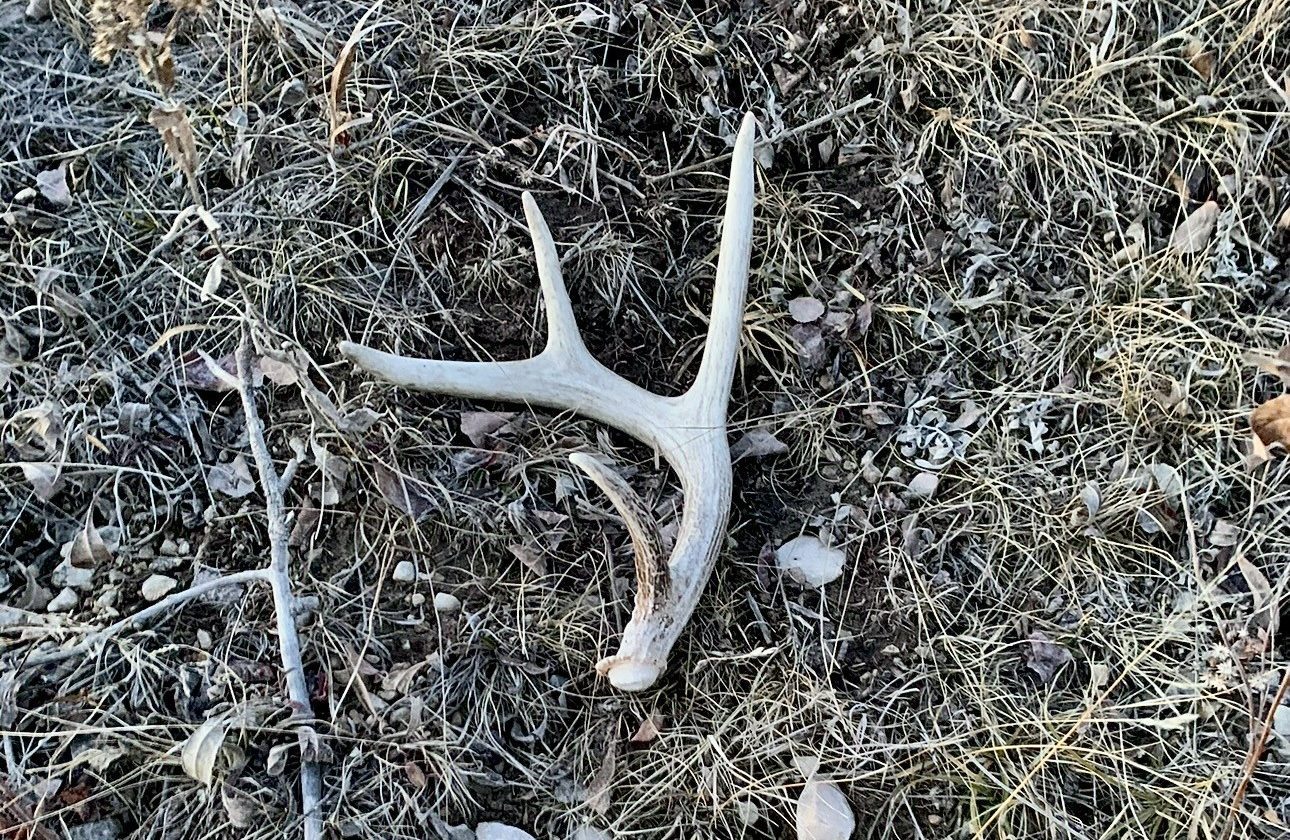
Shed Hunting With Dogs
One of the most exciting trends in shed hunting is training your dog to help. There are a ton of great online resources to get you started, and even trainers right here in Manitoba who can help you take things to the next level. It adds a whole new dynamic to the hunt when your best buddy is in on the action—helping you track down those hidden antlers while spending quality time together in the bush.

How Shed Hunting Sets You Up for Fall Success
As mentioned earlier, shed hunting isn’t just about finding antlers—it can also be a huge advantage leading into your fall whitetail season. All those miles you put on in the spring do more than just uncover tines—they give you a deep, firsthand understanding of the land. You become intimately familiar with the ridges in the bush, the swamp runs, areas with mature tree cover, natural pinch points, and, most importantly, how deer are using these features in the landscape.
While shed hunting, you’ll often come across signs from the previous rut—rubs in various stages of wear and scrape lines etched into the ground that can lead you straight into key bedding areas. These signs tell a story. They reveal not only where bucks were moving and rutting just a few months ago, but they also suggest the presence of mature bucks in the area—making it a strong candidate for your fall setup.

And if you happen to stumble across a big shed in one of these spots? That’s a true indicator that a mature buck made it through the season and was active there during the rut. That antler becomes a physical clue, a target to key in on for summer trail cam scouting and fall hunting.
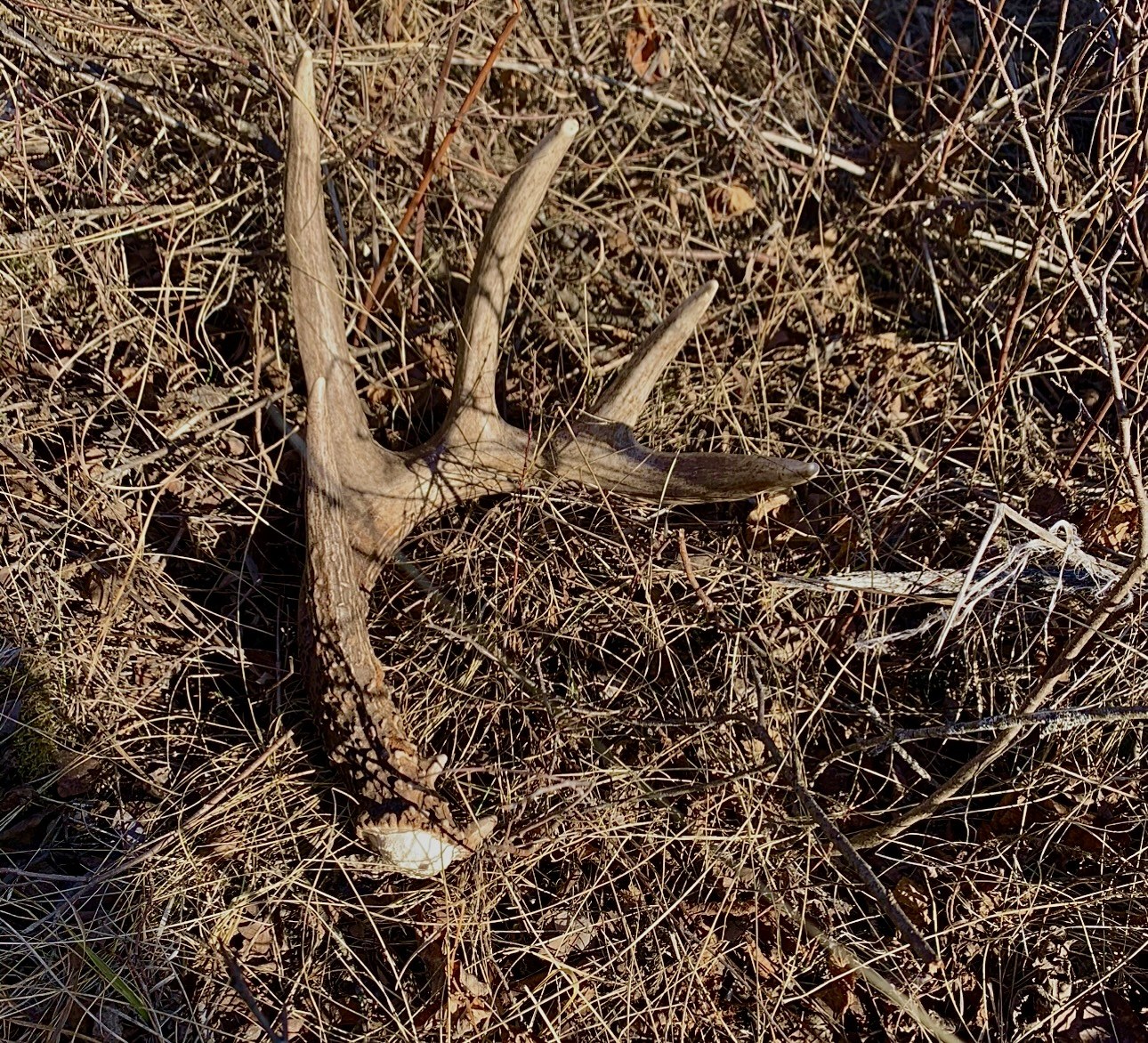
This kind of intimate boots-on-the-ground knowledge puts you one step ahead. You’ll already know the travel corridors, high-traffic areas, and terrain features that influence deer movement—so when it comes time to hang a stand or set a blind, you’re not guessing. You’re building a plan based on real intel. Trail cameras placed in the right spots in the spring and summer can help you pick up that target buck again and track his movement leading into the fall.
And if all goes right? You just might end up harvesting the very deer whose antler you held in your hands months before. That connection—from antler to harvest—adds an entirely new layer of meaning to the hunt. It’s a full-circle experience, one rooted in time spent, ground covered, and stories remembered.

Tracking Antlers, Building Stories
From uncovering signs of last year’s rut to learning the lay of the land more intimately than a map ever could, shed hunting in Manitoba is more than just a spring pastime—it’s a key part of the whitetail hunter’s year. It gets you outside, keeps you active, and sets the stage for success in the seasons ahead. Whether you’re out walking the fencelines, glassing field edges, following trails into thick bedding cover, or even finding that one shed that ties your whole season together, every antler tells a story.

We’d love to see what you find out there this spring—whether it’s a fresh antler, a memorable walk in the woods, or a special moment shared with your dog or family. Share your shed hunting success with us on Instagram by tagging @HuntFishMB and using #HuntFishMB. You never know—you might just see your photo featured on our page!

